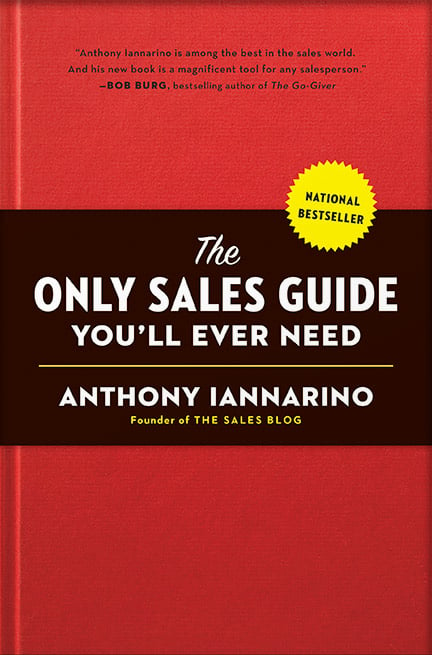The Gist:
- Even though there is a lot of criticism aimed at legacy sales approaches, there is nothing similar when it comes to legacy buying approaches.
- The legacy buying approaches tend to treat complex sales as if they were transactional.
- Work to create enough value to disrupt the process in some meaningful way.
Many posts here outline the differences between a legacy approach to sales and a modern approach to selling, one that creates much more value for your clients. Sales approaches evolve based on clients’ needs, as salespeople start to modify their conversations to help their clients reach the better results they need. If you read this blog regularly, there is a good chance that you are either already practicing a modern approach or trying to modernize specific methods, strategies, and tactics.
However, there are a lot of companies and organizations that still practice a legacy approach to buying. The loud complaints and criticism about the outdated, transactional, and self-oriented approaches to selling are not often matched by the same criticism of “legacy buyers.” But as Bo Diddley wisely cautioned us in 1957, “before you accuse me, take a look at yourself.”


Transact Me? Transact You!
The one thing that marks a legacy buying approach is its transactional nature, but that’s not always a bad thing. If a decision is genuinely transactional—one your client makes frequently enough that they don’t need a lot of help or conversations—go ahead and transact. The transactional approach often works very well when choosing poorly will not cause any real harm: it makes sense when picking out peanut butter, though not so much for the Holy Grail.
Where buyers get themselves into trouble is when they adopt a transactional approach in a complex buying decision. In contrast to a transaction, a complex sale is one in which your client doesn’t make a decision frequently enough to know how to make it most effectively. It is also a decision that, should they choose poorly, there is a possibility of significantly negative repercussions.
The research showing buyers want to avoid salespeople doesn’t consider how often those same buyers try to impose a transactional process on salespeople who are trying to create value. Real knowledge comes from direct experience. Buyers who refuse to take advantage of that knowledge, instead assuming they already know exactly what they want and need, are more likely to see salespeople as a burden than as a blessing.
So how do you deal with legacy-minded buyers when you still need to win their business? Here are two common transactional scenarios and some tips for handling them.


Scenario #1: The RFP
There may be nothing quite so transactional as a Request for Proposal, especially when you get the exact same one eight years in a row. Before you pull up last year’s files and dust off your copy and paste keys, you would be wise to remind the client that quite a bit has changed since they started using the RFP template.
RFPs are often released in cycles, so use the time between them to learn what you need to know and position yourself as your contact’s preferred partner. Once the RFP shows up in your inbox, call the person who “let” the RFP (i.e., released it—a bit of technical jargon worth knowing), and ask them how they want you to respond to the needs their stakeholders shared. Politely explain that there are no prompts that allow the level of detail they are going to need to evaluate your response. You are almost certain to be invited to present: most people avoid making mistakes, so once you suggest you know something they don’t, you are playing a game of heads I win, tails you lose.


Scenario #2: The Ninety-Minute Beauty Contest
One of the worst errors that legacy buyers and decision-makers make is selecting three companies and allowing them each ninety minutes to present themselves and their proposal. In both business and relationships, when the decision is important, it’s important not to fall for someone who just tells you what you want to hear the first time you meet. Likewise, ninety minutes doesn’t really tell you what you can expect from the client—they might turn out to be your dream client, but they could also be an absolute nightmare. (A tip: any litany about how of your competitors are terrible followed by effusive praise of your presentation should put you on guard. There is almost no chance this client isn’t a nightmare.)
If you must participate, you need to do two things in your presentation. First, don’t use any slides at all. Instead, offer your client an opportunity to “just chat” about what’s important to them and the things that cause them problems. Towards the end of your conversation, ask your contacts to agree that if you look like a good fit for their needs, you’ll have a number of meetings to help both of you learn what you’ll need to do to be successful.
When something as important as fit is left out of the buying process, work like hell to work it back into the conversation, even if it means having a three-hour whiteboard meeting to dial in your solution and the changes your client will need to make on their side. After all, you want a chance to get to know the people you are going to be working with and how best to take care of them.
Do Good Work:
- The best way to prevent a legacy approach to buying is to develop relationships with the real stakeholders before they impose a transactional process.
- When you are forced into a transactional approach, disrupt the process by asking questions that nudge your contacts toward a more modern approach.
- Use all your diplomacy to recommend changes that make the process less transactional, all in the name of ensuring the client makes the best decision.

Essential Reading!
Get my first book: The Only Sale Guide You'll Ever Need
"The USA Today bestseller by the star sales speaker and author of The Sales Blog that reveals how all salespeople can attain huge sales success through strategies backed by extensive research and experience."
Buy Now










